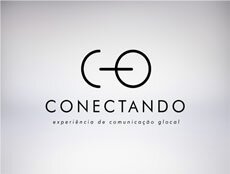Brazilian filmmaker Valnei Nunes recalls the days he spent on Turkey’s Syrian border covering armed conflicts in the region and reveals that “the involvement is inevitable”
By Rômulo Seitenfus
Part of the largest humanitarian crisis of our time is taking place between the cities of Kobane and Suruç. In September 2014, Kobane located in northern Syria, bordering Turkey, became a strategic focus for the jihadist group Islamic State – which has further aggravated the situation in the region that was already ravaged by civil war between rebels and soldiers of Syrian President Bashar Al-Assad, which began in 2011. Across the border in Turkey, Suruc has become the destination of thousands of refugees, mainly Syrians of Kurdish ethnicity who have been left stateless during the last four years.
It was in this war zone that the Brazilian filmmaker and photographer Valnei Nunes spent about a month between September and October last year, witnessing the mobilisation of Islamic state, the resistance from the Kurds and the US Army and the consequent exodus of thousands of citizens in search of safety. Along with the reporter Sergio Utsch, he produced a series of reports for the Brazilian broadcaster SBT, and now some of his photographs and footage have been presented in the exhibition Displaced, at the Embassy of Brazil in London, until 6 March.
The show portrays the plight of Syrian refugees. According to the UN Agency for Refugees, nearly half of the Syrian population have been forced to flee their homes because of the violence and more than 3 million refugees have left other countries in the region. “The involvement is inevitable,” Valnei Nunes confessed in an exclusive interview with Brasil Observer. By the time this text was written, Kurdish fighters had beaten jihadists in Kobane. And the exhibition now heads to Frankfurt, Germany, in order to reach as many people and collect donations for the victims of war.
Part of the only Brazilian news crew in Kobane, Nunes has a degree in Film and Video, but has always been linked to human rights, depicting indigenous issues and denouncing the poor treatment of mental health public services in Brazil. In this interview, he tells us about his time reporting the conflict and it’s effects on the Syrian people.
At what point did you realise the size of the conflict?
I had done difficult international coverage before, but did not expect such gravity. On the fifth day the situation was considered the greatest humanitarian tragedy in the history of UN refugee agency. The situation only worsened and the journey was just beginning.
Was there any difficulties during your time there?
There were many. Around the city of Suruç, the meetings between the Kurdish militia and the Turkish army became increasingly tense. In one of the protests, we were two meters from the police when suddenly the Turkish army launched an attack against all who were around. Journalists, photographers and the Kurdish militia were dispersed by the effect of tear gas. We got into the car and started an immediate return toward Suruç. Along the way the road was blocked by tanks and militants; we could not move and decided to wait in the middle of the road, at a distance from the conflict. I tried to film a man praying in the middle of the attacks when suddenly I heard a vacuum and an explosion behind me; it was a mortar fallen less than 200 meters from our car – we were the target. All indications have been the Turkish army, but the city of Kobane and the Islamic State were right there, all against all, and the threat was coming from all sides.
Kurds accuse the Turkish of financing the Islamic State. Turkey, who have imprisoned the Kurdish leader of the Workers Party (PKK), Abdullah Ocalan for more than 15 years, considers the Kurds a territorial threat. On the way back from the first protest, I felt a progressive pain in the left shoulder. The next morning I could barely hold the camera lens. I had dislocated my left shoulder. I had eight days of coverage; there was no time to go to hospital. The next day, I was seen by one of those miraculous oracles of the Middle East. It was a Kurdish old woman who twisted my body, prayed and kissed me; then stuck two stickers on my shoulder that burned my skin. The treatment was successful treatment, I improved in two days. Even with a dislocated shoulder, I continued to film and photograph but it was difficult.
Did you have some kind of protection?
No. The international press that was there felt threatened; there was no way of knowing where the attack would come from. I remember that even a car from the BBC, with a great staff, was violently attacked by the Turkish army. It was a chaotic situation.
How did you cope in this situation? At some point did you find yourself emotionally involved with the refugees?
There was a child in particular, about four years old, who was living in one of the shops that were being used to house refugees. I remember I had a tangerine in my pocket and as started to peel it, it came and bit my arm, he was starving. I started to take food from the hotel where I was staying to give to the kids this store. I remember the refugees were all very hungry. The image of refugees arriving at the border was of biblical proportions: thousands of hungry, dusty and dehydrated people. In one of the mosques that served as accommodation for refugees, a teenage girl, Muna, who was 15, had been burnt all over her body and had to wait 10 days for medical treatment.
Even in terrible situations, there can be poignancy and even beauty in the images captured. What are your most memorable photo memories?
There was a time when I went to a square where the UN truck used to distribute the only meal of the day for families. A crowd of children jammed into the queue. I got in the truck and by the window, near a huge pot of meat, a group of children of all ages were pushing with empty buckets in hand to get a better place in line. Many of those children were collecting food for between 15 to 20 people in their extended family each day. That square which I called the “Garden of Refugees”, where I showed dozens of colourful clothes of Kurdish women scattered among the bushes, I saw an unforgettable beauty, despite the sad situation.
What led you to put on this exhibition?
First the need for people from other places to know the history of the the Kurds, who have been most affected by the war. They are the largest ethnic group on the planet without a recognised state, they live in different regions of the Middle East and, although they are Muslims, women are respected, the veil is not required, and both the man and the woman have the same rights. The other is the need for donations for families who are in a situation of abandonment. I remember there was not enough tents for all who came, whole families slept leaning against the walls of the camps awaiting housing. In the exhibition, 20% of sales of works will go to refugees in the region.
Do you want to continue covering conflict zones?
I think I do a good job in extreme situations. While there are conflicts going on, the responsibility of the communicator will always be the expression of force required to report the reality composing a critical and unpretentious look. I must return to the field this year with another project that is in progress.




